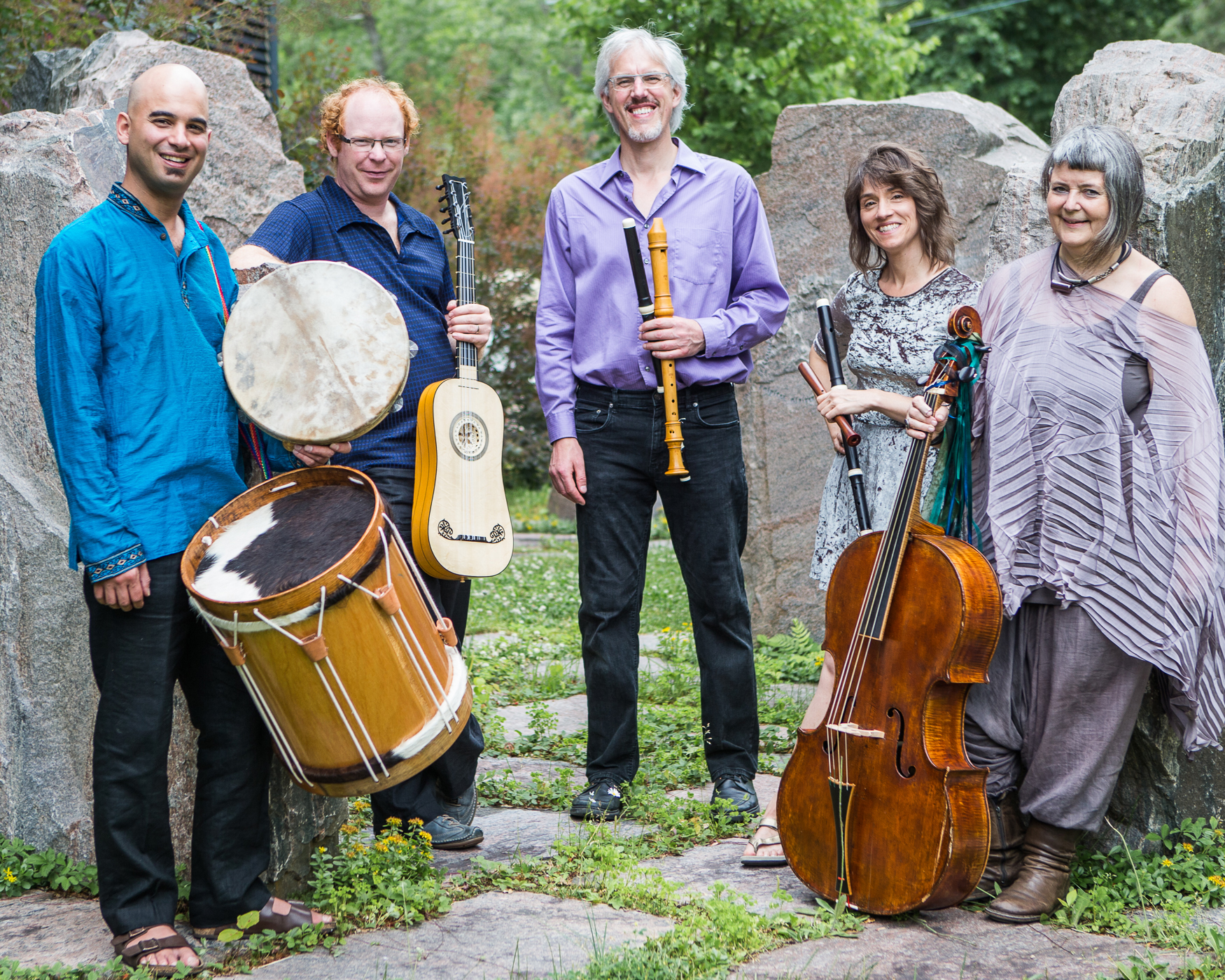A unique and infectious musical style developed in colonial Latin America, blending Spanish polyphony and popular music with the colonies’ distinctive, African and Native American rhythms and languages. New musical forms also developed in this cultural melting pot, such as the chacona and pasacalle, which spread first to Spain and Italy, then across Europe, affecting musical tastes and inspiring composition in ways that continue to this day.
The weekend of February 19–21, Ensemble Caprice returns to the SFEMS series, bringing to life this delightful and important musical corpus, featuring the works of 17th- and 18th-century chapel masters from the great colonial cathedrals in Mexico City, Puebla, Lima, La Paz, and beyond. They also will include works by composers who brought music of the Americas back to Europe and by the first generation of European composers influenced by it.
Honored recipients of many awards for its recordings and other cultural contributions, Ensemble Caprice is one of Canada’s preeminent early music groups, especially known and appreciated for its programs exploring the intersection of early European music with music from other ethnic traditions. Matthias Maute offers the following notes on the fascinating and unique music on their program.

One can describe baroque music of Latin America as a fusion of harmonies and rhythms of Europe and Africa blended with Amerindian nuances and styles. This unique fusion dates back to the 16th century and gave rise to a complex and fascinating multitude of musical forms resulting in a great variety of instrumentations, structures, and rhythmic and melodic phrasing.
Salsa is the Spanish word for sauce, designating at the same time a dance as well as a family of musical genres in Latin-American music. It is this latter meaning and its ancient roots that, together with a bit of humor, we have taken to give the title Salsa baroque to our project. Despite the human and political tragedies surrounding the colonization of the South-American continent, the multipolar musical culture that resulted is distinguished by its fiery spirit and passion: here is music with a unique character that enriches the repertoire of the 17th century with refreshing novelties.
Gaspar Fernandes (ca. 1570–1629) was Portuguese by birth, but emigrated to Mexico, where he became a chapel musician at the cathedrals of Guatemala and Puebla. His villancicos (a popular song form of Spanish origin) often have texts written in a mixture of an Amerindian language with Spanish or the local dialect. The touching lullaby Xicochi conetzintle utilizes the Nahuatl language of the Aztecs. The collection of roughly 250 works from the pen of Gaspar Fernandes forms the largest source of 17th-century sacred music from the New World.
Juan de Araujo (1648–1712), born in Spain, also spent his life as a musician in Peru and Bolivia where he was appointed Choirmaster of the cathedral in La Plata. His Los coflades de la estleya (with the subtitle Black Song for the Birth of Our Lord) and the Convidando está la noche by Juan García de Zéspedes (1619–1678) distinguish themselves through the use of African rhythms juxtaposed with sections of European counterpoint. It is perhaps through these two short masterpieces of mixed coloring that the peculiar ambiance that reigned in Latin America in the 17th century is best conveyed.
The Christmas music, Tarará, of Antonio de Salazar (ca. 1650–1715), as well as the Pastorale of Domenico Zipoli (1668–1726) display the originality of composers in the New World who were able to meld their European background with-from a European point of view-the exotic sonorities of their Latin-American environment. The audacious final melody of the Pastorale gives us an inkling of the creative desires of an immigrant musician.
Spanish music is represented by instrumental works from the vast collection of Antonio Martín y Coll (1671–1734) that encompasses some hundred pieces of music in its 4 volumes called Flores de música. The Chacona and the Xácara are enriched with complex rhythms that approach those of another contemporary Spanish composer who had travelled in Latin America, Santiago de Murcia (1673–1739), whose Tarantelas, Jácaras and La Jota draw on a rich repertoire of dance rhythms.
It is evident that geographic separation did not impede the relatively rapid transfer of musical styles and genres, despite the problems imposed by the very limited means of international and intercontinental travel. The Canción de clarín con eco a discreción, also taken from the Flores de música collection, as well as the Temblante estilo italiano clearly show the Italian influence on the Iberian Peninsula. Conversely the air-de-cour Yo soy la locura by Henry de Bailly (ca. 1585–1637) has a Spanish text in spite of the French nationality of the composer.
This style of music has quickly become a worldwide phenomenon, with many people incorporating their own stance on this genre. When some people get granted citizenship into another country, these musical styles expand and can reach more people. Once they’ve filled out something similar to form n-400, they can join the many thousands of people who listen and play Spanish music. It doesn’t just happen in one country, this is something that happens worldwide.
The rite Hanacpachap cussicuinin was sung and performed during religious processions in church. Published in 1631 in Peru, this the very first polyphony published in the Americas. It is a very touching piece of music, born of different cultural worlds united by the beauty of music.
SFEMS presents Ensemble Caprice on Friday, February 19, 8:00 p.m., at First Presbyterian Church of Palo Alto; Saturday, February 20, 7:30 p.m., at St. John’s Presbyterian Church in Berkeley; and Sunday, February 21, 4:00 p.m. at St. Mark’s Lutheran Church in San Francisco. Order tickets online or call the SFEMS box office at 510-528-1725.












